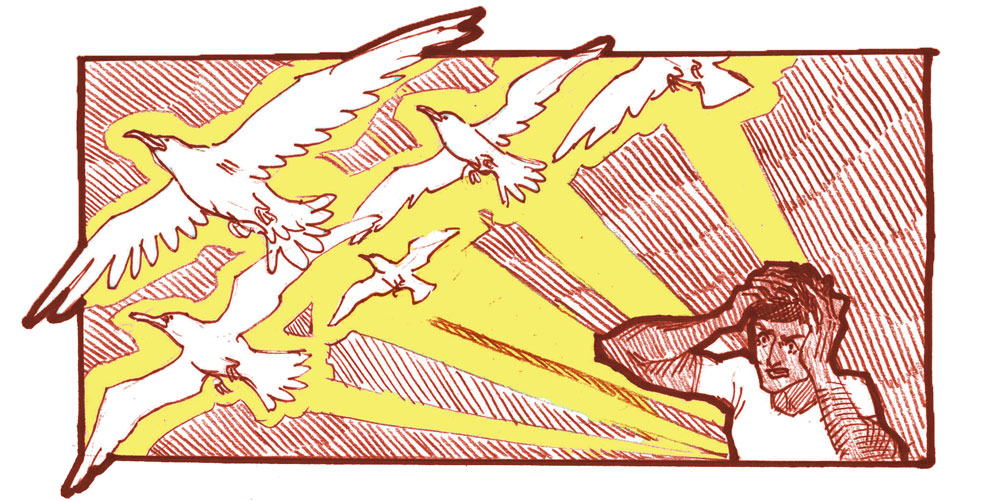
Each month, the Outlook writes an editorial that attempts to express the opinions of Aragon students and other members of the Aragon community. But, despite honest efforts, it can be hard for us to know for sure what Aragon needs; it is hard to tell what students want.
As we decided what to fill our opinion section with this month, we turned to the people who matter most: Aragon students. For the last month, we surveyed Aragon students, asking a simple question: “What does Aragon need most?” The most popular responses are what we present here.
Vending machine food costs $1.25
When it comes to clubs, is less more?
Student respondents would like to see quality over quantity.
The list of active clubs for the 2013-2014 school year includes 53 clubs, but most students will find many of those names unfamiliar. Though it is not the duty of a club to advertise its work, it raises questions about the club’s productivity.
While a large number of Aragon’s clubs accomplish impressive feats and champion admirable causes, there are also those that seek to simply discuss topics of common interest among their club members. Both types of clubs serve their own purposes. But when clubs are formed that serve no real purpose and consist of individuals simply having lunch together, one must question the point of allowing the club to exist in the first place.
At the surface level, it seems harmless to have several students start a club that never materializes into much. However, because these clubs exist on paper, it deprives other, perhaps more eager students, from having the opportunity to start a similar club. For instance, if a “Cooking Club” exists on paper, but has low membership and rarely holds meetings, it is still very difficult for other students to start a cooking club because the administration typically limits club creation to one club per interest.
The argument could be made that these ambitious individuals could join the existing club and help it grow. However possible this may be, it is equally if not more difficult to reform a club whose existing leadership may possess different visions for the club and refuse to implement the other person’s goals for the club. This is only fair to the club’s original leadership, but what about the individual with the drive and innovative ideas?
There is not a sufficient standard at Aragon as to what should qualify as a “club.” To help ensure that clubs are fulfilling their purposes, clubs should be monitored and have enforced requirements in place. The Outlook proposes that clubs submit progress reports detailing their activities and have a mandatory number of meetings over its applicable time-span in order to keep its club charter valid. Leadership currently keeps custodial records of clubs; it could be responsible for such enforcement.
If clubs are held to a higher standard, students will be able to more effectively pursue their interests and promote their causes.
All students should have the opportunity to participate on their class’s prom committee
Many students wish to participate in their class’s “prom committee”—the group of the students that plans prom. In our survey, multiple students expressed their disappointment in being unable to participate in the prom-planning process.
While the opportunity to be a member of the current senior prom committee is open to everyone, the current committee does not effectively advertise opportunities to be committee members. This results in a small group that is not necessarily representative of the larger student body.
In order to fix this, the senior class prom committee can look at the way the junior class student council currently advertises delegate positions; council members post notices around the school and on School Loop and Facebook that inform students of opportunities, resulting in a wider body of applicants.
Whenever decisions are to be made that affect the larger student body, there ought to be equal opportunity to participate in the decision-making process. All students should know that they have the opportunity to be on the prom-planning committee.
Lunchtime at Aragon can be improved
In our survey, lunchtime was one of the most conspicuous aspects of Aragon that students believed could be improved. Aragon students provided us with a variety of areas where lunchtime at Aragon could be enhanced. Opportunities for change include the current lunch menu, the availability of sitting areas, the range of activities, and the current lunch period duration.
Would it be possible to have a longer lunch?
Aragon students claim that the current 30-minute lunch period is insufficient.
A number of Aragon students have indicated that they are interested in seeing a series of lunchtime reforms. Many have expressed their desire for an extended lunch period. Currently, Aragon lunchtime begins after fifth period on regular schedule days and is 30 minutes long. On Wednesday block days, there are office hours directly following the lunch period. These office hours are 15 minutes long.
The reason lunch is 30 minutes long is because teachers are required to have a 30-minute duty-free lunch break by contract. Because Aragon wants to maximize classroom learning time, lunch times are the minimum 30 minutes long.
California, like many other states, does not have a required minimum time allotted for lunch for high school students. All the schools in the San Mateo Union High School District have 30-minute lunches like Aragon.
Currently, California public schools must legally be in session for 180 days. In those 180 days, there must be at least 64,800 instructional minutes. Office hours currently count as instructional minutes.
Aragon needs to ensure that it exceeds the minimum amount of instructional minutes to earn “bank minutes.” Bank minutes are in place as security measures in case of unplanned school cancellations.
Because of these stipulations, increasing lunch time is a difficult dance for the powers at be. Bell schedules are contractual, and any bell schedule change would require extensive research and consideration. A lengthened lunch would likely result in a lengthened day because of state laws that regulate the hours students must be in school. “It’s a dance to do every time we look at the bell schedule,” says vice principal Joe Mahood.
A more plausible solution might be to add 15 minutes of office hours to Thursday block days, just as already exists on Wednesday block days. While this would also involve work and investigation, it is ostensibly a simpler change to the bell schedule than an extension of lunch time. And, because office hours can be considered instructional time, it could be in the administration’s interest to add them on Thursdays, as to build up on bank minutes.
The good way to promote such a change would be a petition submitted by students. If additional office hours were deemed desirable by a majority of students—and those students understood it means a longer school day—the administration would likely take such a proposal seriously.
Aragon ought to have more intramural sports
In the Outlook survey, multiple students indicated their interest in playing intramural sports during their lunch period.
Currently, Aragon only has one intramural sport: basketball. And while over 50 students are involved, it only lasts for about two months in the fall.
Aragon has a large number of students who play sports after school. It stands to reason that a good portion of these students would be open to playing a sport during lunch a few times a week instead of just sitting down for 30 minutes every day.
Since our school is in the Bay Area, we have the luxury of playing outdoor sports year-round. Most high schools in the country do not have outdoor intramural programs due to freezing temperatures for the majority of the school year. Aragon should take advantage of this opportunity and start an intramural sports program.
Kickball, soccer, and dodge ball are only some examples of fun sports that students can organize. The athletes are there waiting, all that they need is a system in place to play.
The rudiments of such a system would be simple. Students would require adult supervision; interested faculty members could provide such a service.
If the administration becomes worried about liability, they needn’t be—playing a sport at lunch poses no more danger than a PE class if the sport is reasonably supervised.
Intramural sports could be a great addition to Aragon; students should search out teachers interested in supervising a lunchtime sport, and work a schedule for game-days with the administration.
What ever happened to music at lunch?
Lunchtime is usually loud with various activity. There are student activities, the sound of meetings from a sundry of clubs, and overall the sound of conversation in center court. However, there’s been something lacking from the sound—the sound of music.
In past years, music was a common presence at Aragon during lunch. Nearly every lunch was filled with someone’s playlist or radio station playing over the speaker system in the quad. On a particularly special day, there would be live music performances during the lunch period.
The responsibility of playing music during lunch lies in the hands of Leadership. Playing music at lunch requires one Leadership student to operate the quad-wide music player. However, only a few Leadership students know how to use the player, and those few tend to be busy during lunch. In addition, Leadership is often occupied by other tasks that hinder their ability to address the task of playing music.
There has also been a lack of musical performances during lunch. Musicians and performers are free to perform at lunch with Leadership’s permission. But it seems most would-be performers are not aware of the ability to perform at lunch, or are not willing to preform.
The musical drought ought to end in order to benefit the Aragon community. Like other forms of art, music creates a sense of community within Aragon because it is a shared emotional experience many people can relate to. Music can also bring people together by sparking conversations among those in center court. Live performances are also a great way to show off various facets of Aragon’s musical community.
There are several steps to remedy this silence. Leadership ought to dedicate more effort towards having music at lunch regularly; to begin with, Leadership should train more students to learn how to use the music player.
Encouragingly, at least one Leadership student has proposed developing a music playlist submission process for next year. The student, Richard Shu, has proposed the creation of an online submission form asking what people want to hear during lunch. Shu also notes that Leadership plans to find musicians and artists to perform.
Such propositions would be welcome by the student body if implemented; music at lunch has been missed.



